As business collaboration technologies become more complex, interactive and reach further, can face-to-face meetings survive and how should organisations plan their customer lifecycle interactions?
The cost pressure for organisations to offer fully automated robotic workflow automation with self-service is huge. Some feel that this should be the only customer option (particularly for low cost services), but others recognise customer frustration with constrained service and instead prefer a spectrum of communication methods to accommodate the changing predilections of prospective and current customers.

Low cost-to-serve by removing travel is a compelling driver of robo-advisor services, yet organisations are only just waking up to a new world of possibilities with AI assistance and segmenting interactions by service stage needs with differing levels of human interaction.
We all know that travelling to meetings is expensive and time consuming versus online, so what role should face-to-face meetings play?
Online meetings can take many forms, but the level of human presence (including remote face-to-face) can vary widely.
Remote/Online meetings can vary widely in their levels of human presence

This article explores a number of important behavioural considerations for organisations when deciding on customer interaction strategy prior to choices of automation and engagement technologies.
1. Clearly communicating goals and objectives
Face-to-face meetings allow for clearer communication than over telephone, IM chat, forms-driven or email methods of contact. In addition to being able to read facial expressions, body language and inflection, face-to-face meetings (whether remote or physically together) often end up being more positive - and considered more credible than other online conversations.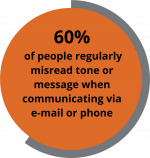
Without non-verbal cues, one also risks misinterpreting information. In fact, 60% of people regularly misread tone or message when communicating via email or phone.
Net? Seeing and talking trumps typing.
2. Bonding and relationship building
No matter how much we may like social networking, in-person interactions are at the very core of relationship building, both personally and professionally. In fact, 85% of people believe face-to-face meetings contribute to stronger, more meaningful business relationships. And that holds for some types of video meetings.
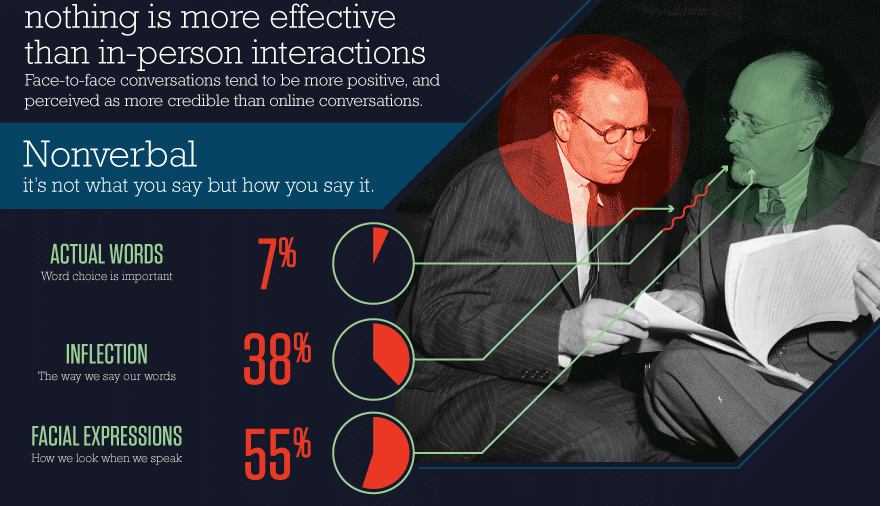
Source: GreatBusinessSchools.org
So, if you want to from true, concrete connections, try to meet in-person with all visual clues available rather than other forms of online interaction, whenever possible. After all, there's no good ultimately in 'looking busy' by increasing interactions hugely from online operations if persuasiveness and conversion rates are simultaneously too low.
3. Millennials aren’t anti-social!
Millennials are currently the largest generation in the workforce. Businesses both equip many for remote working and encourage home working to save costs. As consumers we are used to apps like FaceTime and Hangouts. But whilst there is consensus over whether it’s necessary to travel to an office (70% of Millenials think not), there are very different preference implications when it comes to how work communications are conducted.
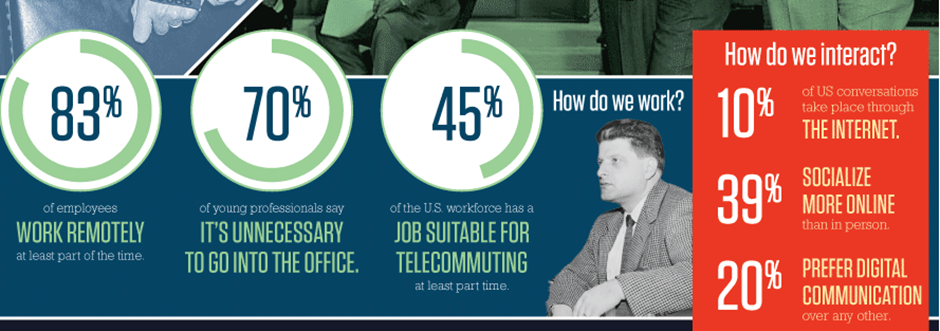
Even though they’ve grown up in a much more digital age than previous generations, approximately 80% of both Millennials and Gen X say they prefer meeting face-to-face when communicating with colleagues. Not a signal that face-to-face meetings will go out of style anytime soon.
4. Technology helps improve our ability to meet, not replace it
While social networking is now the most common way to connect, face-to-face meetings such as business presentations or more informal ‘social networking’ are still important pieces of the puzzle when it comes to building revenues or a business network. Some types of purpose are still best served with physically in-person meetings, especially those where the senses of touch, smell or taste are important, or the physical layout or proximity of buildings or physical assets. It’s difficult to replace the bonding potential of shared drinks or a firm handshake.
Platforms like LinkedIn, Skype, Hangouts, or most other general virtual meeting technologies provide tools that can aid your meeting/networking efforts rather than replacing them altogether. These may often also assist the metrics of efficient connections but have limitations in terms of what can actually be achieved by themselves.
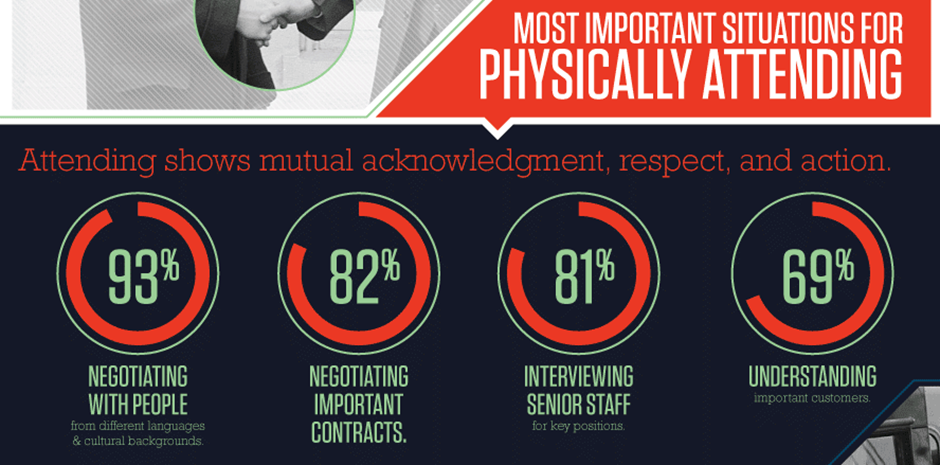
Source: GreatBusinessSchools.org – portal for business students’ education.
In a modern world, with competitive cost pressures, ignoring the 95% of us who feel that in-person meetings are essential for long term relationships is done at one’s peril. However, the frequency and types of expected use of meetings that are physically attended often needs to be more selective.
5. Smart Meeting technologies as alternatives to physical co-location
A step-jump up from general ‘video meetings’, often aligned to web-cast technologies, are technologies with specialist capabilities designed to optimise remote meetings in small groups from 2 to 6 (usually 10 max.) people. Online tools for collaboration, identity capture/validation, signing, auto-notes/recording, CRM customer folder integration, and the like, set this class of technologies apart. They can even be AI-assisted, contain conditional workflow routing or offer only the correct context sensitive options to users, whether organiser, client or guest.

The big trade-off is between the potentially huge savings in cost, time and compliance efforts for physical meetings (including travel, note-taking, information transfer, etc.) and the effort of changing working practices versus the upside of ‘simply powerful’ Smart Meetings lacking just some marginal elements of physical meetings. Add to this that for the equivalent time or cost many more remote meetings can be undertaken and that many younger customers actually prefer Smart Meetings to physical meetings in any form, and it’s not hard to understand why Smart Meetings will be catching on quickly.
6. Face-to-Face is best for some, but not all, uses
So, we can see that there is a continuum of value addition versus cost in relation to almost all technology choices. How well does your organisation’s communications capabilities fit your customer engagement strategy?
If we ignore cost and only consider the scales of participant Empathy and meeting Effectiveness, one can see that both can improve with more advanced technologies as better in-person virtual meeting support is utilised:
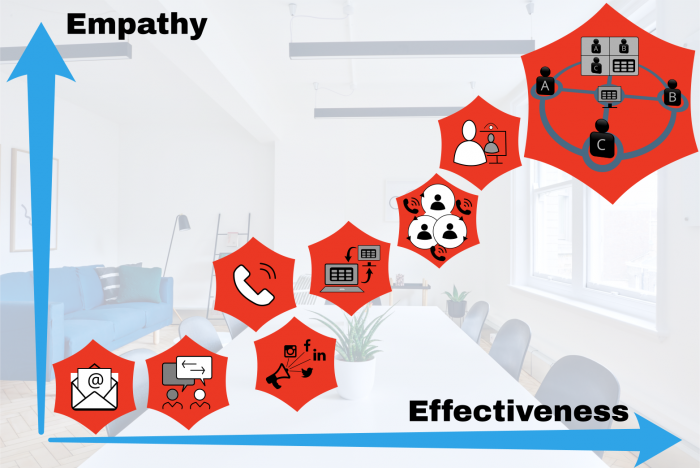
If we also consider Cost against this, then Smart Meetings win hands-down!
7. What impact do virtual F2F Meetings have versus in-person?
Each organisation needs to assess what will work for them. Specialist consultants (like Icon) can help by not only looking at present processes but challenge existing thinking with insights based on best practices and success models benefitting from advanced technologies.
A comparison of physical in-person meetings to virtual meetings using Smart Meeting technologies might be quantified as follows:
Quantifying Meeting Effectiveness - Example
| Attribute |
Factors |
Web-Meeting Effectiveness |
| Clearly communicating goals and objectives |
Superior preparation for remote meetings |
100% - 130%* |
| Mutual understanding and empathy |
Subtle Visual (non-verbal) cues: read facial expressions, body language and inflection |
90% |
| Bonding, social interaction and building relationships |
Social hospitality, physical contact (handshakes), discover shared interests |
50% |
| Judgement & Trust |
Ease of evaluating other people’s skills & values |
85% |
| Client’s organisation or situation and culture |
Opportunity to assess |
50% |
| Sideline discussion opportunities |
Informal Conversations in any breaks or wait time |
70% |
| Use of Time (incl travel) |
Travel, delays, meeting content, return (& re-visits) |
200% - 400%* |
| Completing transactions in one meeting |
Range of suitable tools available; Ability to include other participants as needed |
100% - 1000%* |
* Specified intangible attributes included
In meeting productivity generates the greatest debate between physical and remote meetings, perhaps correlated with contributors perceptions of capabilities available in each context. Some felt that physical face-to-face meetings tended to be more positive and productive, yet others felt that they could be less focused on clear outcomes and less productive. Researchers have found that on average an in-person meeting generates about 28% more ideas versus a virtual meeting (generating 10.4), but there is insufficient evidence on the quality of these.
Regarding productivity, the most significant metrics come from enhanced conversion and retention rates, which tell their own story:
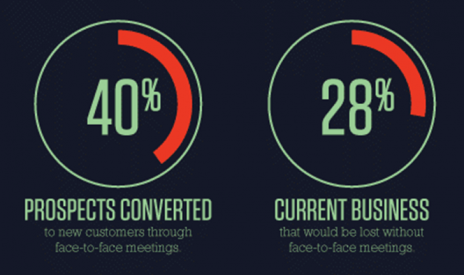
In our experience, the research above underplays the potential. We have seen Smart Meetings increase Prospects Converted from 3% to over 40%. The resulting margin enhancement gives a lot of business flexibility.
Summary
Face-to-Face will always matter. It’s the winners that will use the optimum mix of physical in-person meetings with web-based Smart Meetings for essential face-to-face interactions as part of enhancing relationships within an overall multi-channel approach to revenue generation, cost control and lifetime customer value.
What Next?
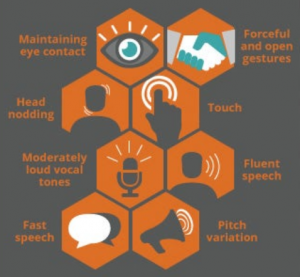
Icon understands what it takes to succeed when re-designing your business meeting processes.
We can assist with all essential elements when changing process, technology, data and people's interactions in documented workflows.
For tips on optimum web-meeting environmental set-up, educational infographics and training services in related matters such as body language, visual clarity and persuasiveness, contact us.
| 

 Connect with us on Linkedin
Connect with us on Linkedin 


 Connect with us on Linkedin
Connect with us on Linkedin 

![]()
![]()
![]()